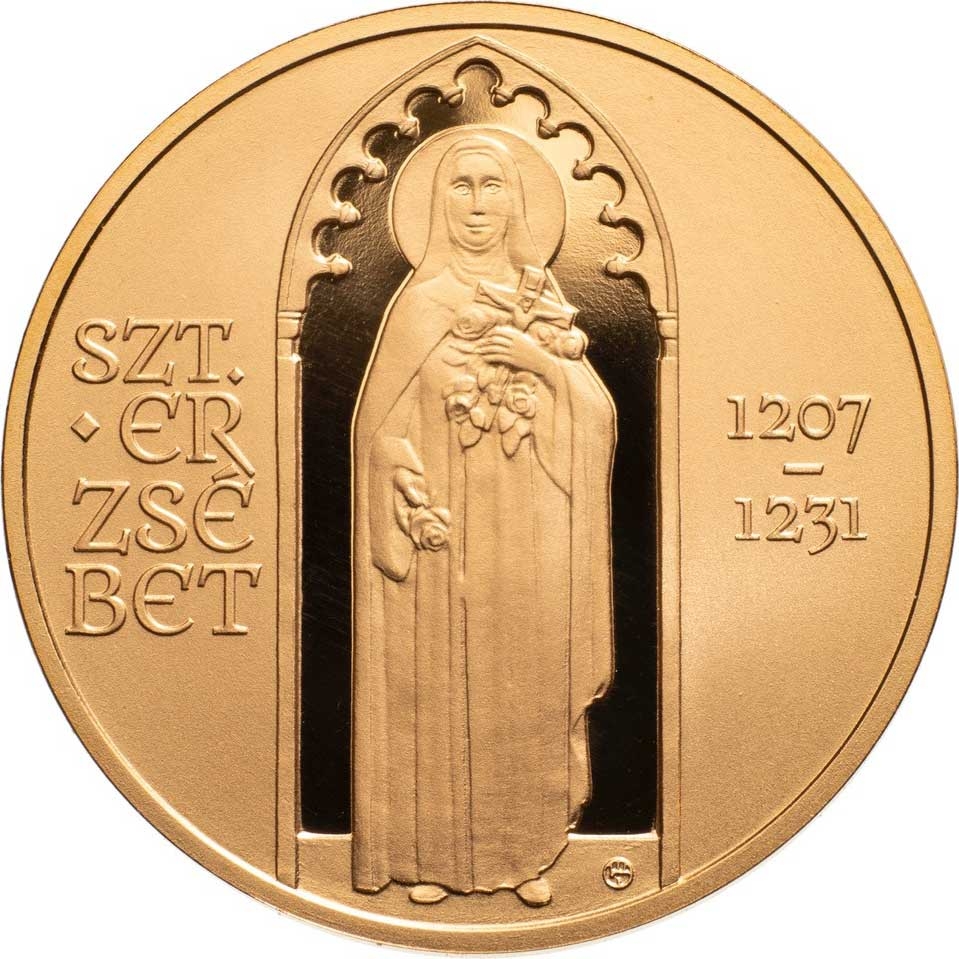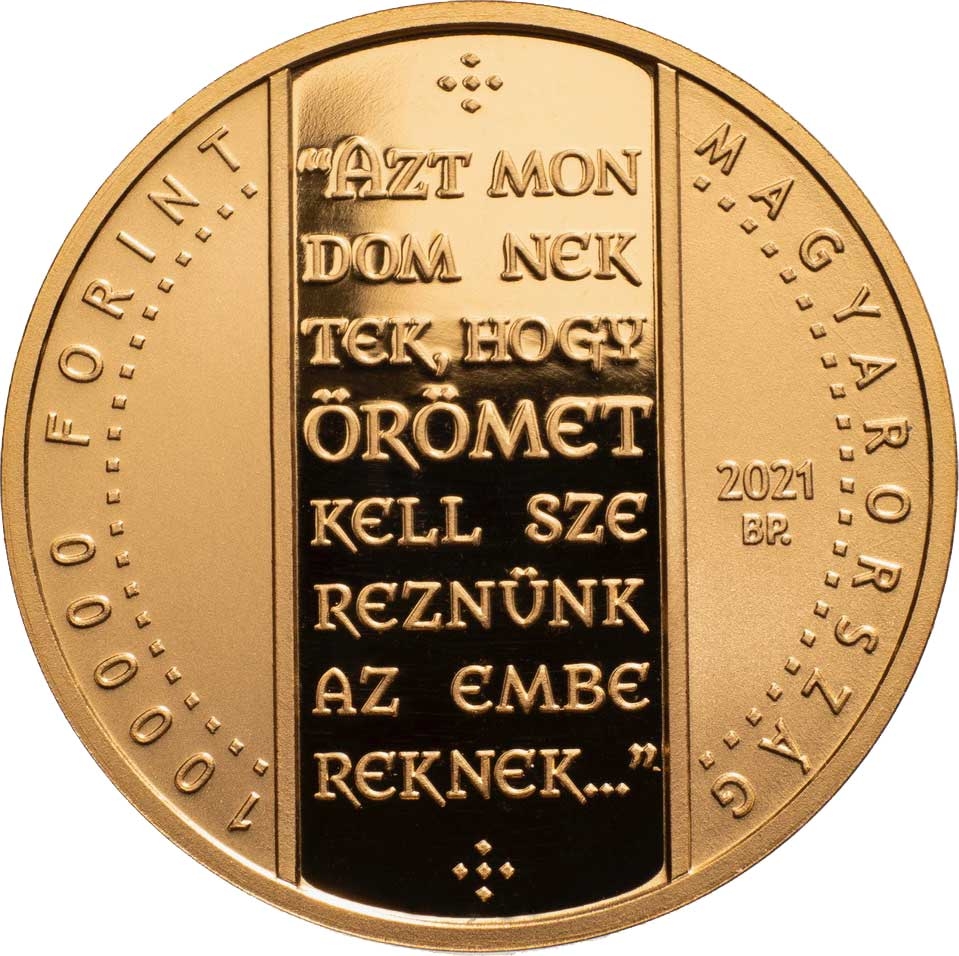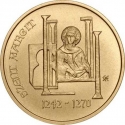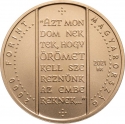You are about to finish your registration. Please check your mailbox (including spam folder). There should be a letter with a confirmation link. Check setting to make sure that your e-mail address is correct.
Send letter againDescription
In 2017, the Hungarian National Bank launched a new coin series featuring the Saints of the House of Árpád.
Elizabeth of Hungary (1207–1231), also known as Elisabeth of Thuringia, was born into nobility, holding the titles of princess of the Kingdom of Hungary and landgravine of Thuringia. Married at the tender age of 14 to Louis IV, Landgrave of Thuringia, her life took a poignant turn when she became a widow at the age of 20, following her husband's untimely death. Faced with the responsibility of managing her late husband's affairs and raising their children, Elizabeth demonstrated remarkable resilience and fortitude. Despite her grief, she took decisive action, reclaiming her dowry and utilizing the funds to establish a hospital in Marburg, where she personally tended to the sick and infirm. This act of charity and selflessness endeared her to the people, and she soon became renowned for her unwavering commitment to serving the marginalized and needy in society.
Throughout her short but impactful life, Elizabeth's devotion to Christian principles and her unwavering compassion for others remained steadfast. Influenced deeply by the spiritual teachings of Saint Francis of Assisi, she embraced a life of simplicity, humility, and service to others. Inspired by Francis' example of radical poverty and self-denial, Elizabeth dedicated herself wholeheartedly to caring for the less fortunate, founding an orphanage after the birth of her first child and a hospital following the birth of her second. Her tireless efforts to alleviate the suffering of the poor and marginalized earned her widespread admiration and respect, both during her lifetime and in the centuries that followed.
Following her passing in 1231 at the young age of 24, Elizabeth's legacy endured, and she was soon venerated as a saint by the Catholic Church. Canonized on May 25, 1235, by Pope Gregory IX, she became an emblem of Christian charity and selflessness. Today, she is celebrated as the patroness of the Third Order of St. Francis, a testament to her lifelong commitment to serving others and embodying the ideals of compassion, generosity, and love. Her life serves as a timeless reminder of the transformative power of faith and the enduring impact of acts of kindness and charity on the world around us.
Engraver: Zoltán Endrődy
Obverse

|
Depicts Saint Elizabeth of Hungary standing in an ogival arched gateway, holding a cross and roses in her hands. The depiction is inspired by the painted, wooden statue of Saint Elizabeth located in the Árpád-házi Szent Erzsébet Parish Church in Budapest. To the left of the depiction, broken into four rows, the inscription "ST. ELIZABETH", and to the right, broken into three rows, the years of Elizabeth's birth and death, "1207-1231", are visible. At the bottom edge, to the right of the depiction, the engraver's privy mark is placed. SZT. |
|---|---|
Reverse

|
Depicts in the central field divided by two vertical lines, broken into eight rows below each other, a quote attributed to Saint Elizabeth of Hungary: "I TELL YOU, YOU MUST BRING JOY TO PEOPLE…”. Below and above the quote, a stylized cross motif is visible. In the middle on the right side, in two rows below each other, the "2021" issue year and the "BP." mint mark are readable. Encircled by a pearl edge, in a semi-circular inscription, on the left side, the denomination and the inscription "FORINT", while on the right side, the inscription "HUNGARY" is positioned. 100000 FORINT |
| Edge |
100 000 Forint
Saints of the House of Árpád
Saint Elizabeth of Hungary
Subscribe series
Adamo# EM442
Saints of the House of Árpád
Saint Elizabeth of Hungary







